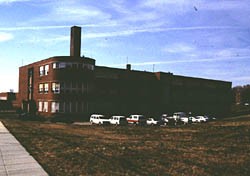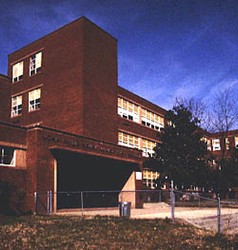John Philip Sousa Junior High School
Introduction
Text-to-speech Audio
Images
John Philip Sousa Junior High School. Photo credit to nps.org

John Philip Sousa Junior High School. Photo credit to nps.org

Backstory and Context
Text-to-speech Audio
While the condition of many of the schools for Black children was much better in Washington, D.C. than other southern cities, many of these schools were still underfunded compared to the rest of the school system throughout the District of Columbia. In addition, African American students and parents believed that the doctrine of separate but equal established in the 1896 Plessy v. Ferguson case violated the 14th Amendment.
The schools for African American children were also overcrowded. Between 1930 and 1950, the Black population in Washington, D.C. doubled and the Black student population increased from 33 percent to 50 percent of the district while the number of schools and funding per pupil did not keep pace. Despite the dramatic increase of the Black student population, the Board of Education built few new schools leading to overcrowding and other problems.
In 1949 a group of African American parents from the Anacostia neighborhood sought to admit their children to John Philip Sousa Junior High School prior to its opening in September 1950. The school board denied their petition for the admission of their children even though they had empty classroom space available. Afterward, the school opened as an all-white school. On behalf of the reject children, James Nabrit and the NAACP sued for admission to John Philip Sousa Junior High School.
The case was named after 12-year-old Spottswood Bolling as his name appeared at the top of the list of rejected students. This particular case was unique because the equal protection clause of the 14th Amendment applied only to state laws while the District of Columbia was under the jurisdiction of Congress. Another aspect of this case that makes it unique from other segregation cases of this time period is that although the segregated schools the plaintiffs were forced to attend were inferior to the new all-white Sousa school, no evidence of inequality was given to the court. The plaintiffs argued only that the principle of "separate but equal" was unconstitutional.
